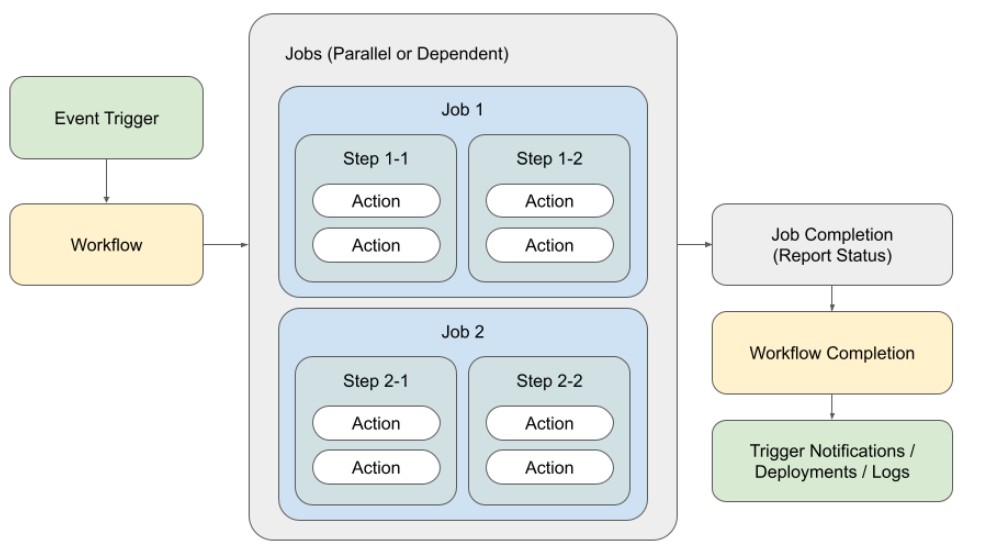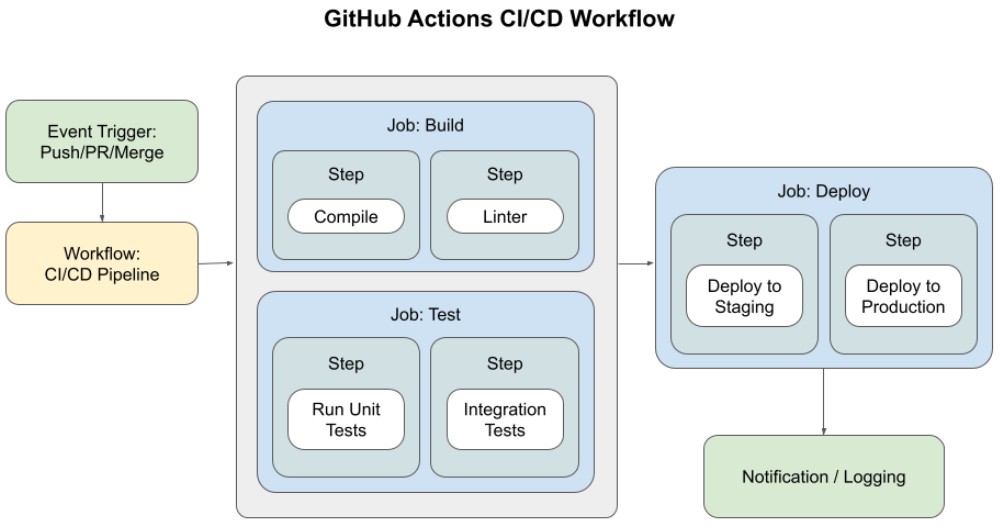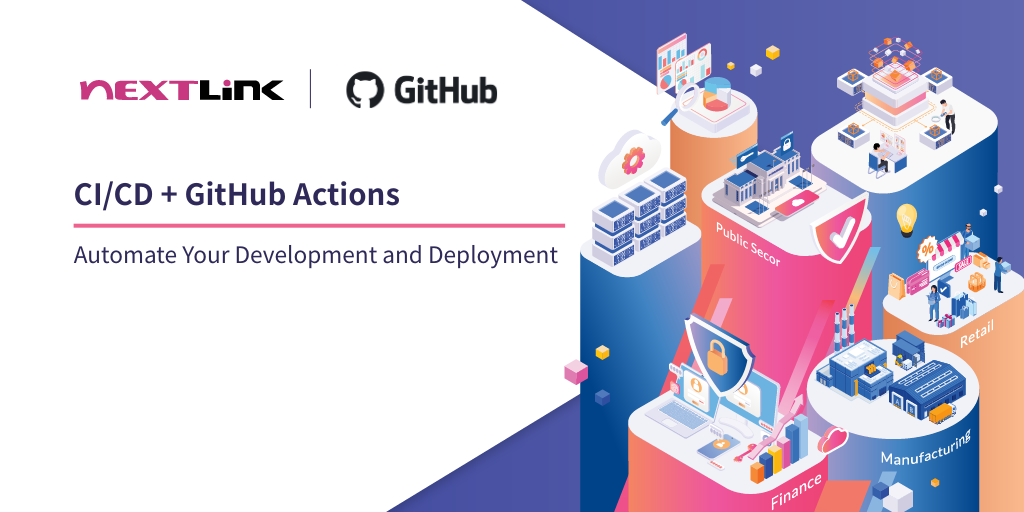In modern software development, every code update requires testing, building, and deployment. Manual deployment is not only time-consuming but also prone to human errors that can disrupt production environments. That’s why development teams are adopting CI/CD (Continuous Integration/Continuous Deployment) automation with GitHub Actions to boost delivery efficiency and code quality.
Table of Contents
Table of Contents
Why CI/CD Automation Matters
Traditional deployment means manually testing code, building applications, and logging into servers—a process that takes 30 minutes to hours and repeats every time.
Key Benefits of CI/CD automation :
- Shorter development cycles: Dramatically reduces time from code commit to production, accelerating product iteration
- Reduced human error: Automated workflows ensure every deployment follows the same standards, minimizing oversights
- Improved code quality: Automatic testing with each commit helps catch issues early
- Enhanced team collaboration: Standardized processes allow team members to quickly understand deployment status
- Enables agile development: Supports frequent, small-scale updates rather than large version releases
While traditional CI/CD tools are powerful, they often require additional server maintenance and complex configuration. GitHub Actions, however, is directly integrated into the GitHub platform, allowing developers to set up all automation workflows in a familiar environment—truly achieving a “push-to-deploy” workflow.
Understanding GitHub Actions Architecture
GitHub Actions is GitHub’s automation platform that lets developers define and execute automated workflows directly within their repositories. GitHub Actions uses a four-layer structure:
1. Workflow – The Top-Level Automation Script
A workflow is the blueprint for your entire automation process, written in YAML format and stored in the .github/workflows/ directory. A repository can have multiple workflows handling different tasks.
2. Job – Parallelizable Work Units
A workflow contains one or more jobs, each executing in an independent virtual environment. Jobs run in parallel by default but can be configured with dependencies to run sequentially. It also supports matrix, allowing tests to be executed across multiple environment combinations simultaneously, with the ability to set job dependencies to ensure more flexible execution order.
3. Step – Specific Execution Items Within a Job
Each job consists of multiple steps that execute sequentially. A step can either run shell commands or use pre-built actions.
4. Action – The Smallest Reusable Unit
An action can be a single command or a complex automated task. GitHub Marketplace offers thousands of community-developed actions, and developers can create their own.
How GitHub Actions Work
- Trigger event occurs → Workflow is initiated
- Workflow starts → Executes one or more jobs based on configuration
- Job begins → Sequentially executes steps in the specified virtual environment
- Step executes → May call an action or directly run commands
- Completion → Reports execution results

How Does GitHub Actions Strengthen CI/CD Workflows?
GitHub Actions isn’t just a script execution tool—its real value lies in how effectively it integrates into CI/CD workflows, enhancing development efficiency and quality through comprehensive automation.
Common CI/CD Use Cases
- Automated Testing: Run tests on every push or pull request
- Code Quality Checks: Enforce consistent style with linters and formatters
- Build and Deploy: Automatically deploy to production when code merges
- Scheduled Maintenance: Run periodic backups, health checks, and updates
- Multi-Environment Deployments: Implement advanced strategies to reduce deployment risks
GitHub Actions vs Traditional CI/CD Tools
Compared to traditional CI/CD tools, GitHub Actions offers these advantages:
- No additional infrastructure needed: No CI/CD servers to maintain
- Native integration: Seamlessly integrated with GitHub for direct access to repositories, issues, and pull requests
- Rich ecosystem: GitHub Marketplace has over 20,000 ready-to-use actions
- Flexible pricing: Unlimited free use for public repositories, with free tier for private repositories
- Easy to learn: Intuitive YAML syntax with a low learning curve

Make CI/CD Your Competitive Advantage
In the fast-paced software industry, the ability to deliver products quickly and reliably is key to staying competitive. GitHub Actions has lowered the barrier to CI/CD, enabling every developer to easily build professional-grade automation workflows.Nextlink, GitHub’s exclusive authorized distributor in Taiwan, provides comprehensive DevOps and automation expertise. Contact us to discover the right GitHub solutions for your needs and experience the efficiency of automation!





